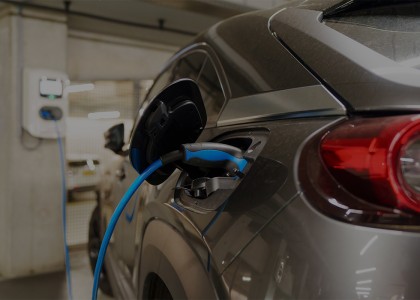Massachusetts’ new three-year energy efficiency plan includes aggressive energy-savings targets for utilities. The plan, approved Tuesday by the state’s Energy Efficiency Advisory Council and filed for approval with utility regulators, is estimated to cut greenhouse gas emissions and achieve $8.6 billion in customer benefits.
Massachusetts is one of 27 states that have an energy efficiency resource standard (EERS). ACEEE has found that EERS policies, which set specific energy-saving goals, are the most successful way to drive large energy efficiency gains in the utility sector, especially when aligned with utility business models to support efficiency, including performance-based incentives and revenue decoupling.
While utility regulators in Massachusetts still need to formally rule on the targets, the plan represents months of stakeholder input. The plan helps show how the next generation of EERS policies is evolving to reflect major changes in the energy system and in climate policy.
Here are five ways the proposed plan indicates a broad evolution in utility efficiency targets:
“Energy Optimization” sets multiple goals and targets multi-fuel savings
The plan pivots from primarily seeking to reduce electric and gas energy usage to a broader system view, helping customers reduce total energy use and their overall utility bills. It describes this as “Energy Optimization.” It sets multiple goals for utilities, including lifetime energy savings from all fuels, including oil and propane savings in addition to electricity and natural gas, in millions of British thermal units (MMBtu). Importantly, the goals also maintain clear targets for electricity savings in lifetime kilowatt-hours (kWh), lifetime natural gas savings in therms, and annual demand reductions in megawatts (MW), among others.
While annual electricity and natural gas targets will no longer be the sole focus, program administrators will continue to report their progress annually. The average annual electricity savings targets are 2.7% of power sales, slightly lower than the previous goals, but the plan’s average annual natural gas savings goal will increase to 1.25%. (The plan notes that rising technology baselines continue to reduce claimable savings, which is a reason for the slight drop in electricity savings targets.) Consumer benefits for the electric programs and the overall portfolio will increase, compared to the prior plan.
Other states are setting energy efficiency targets in multiple metrics, including total energy use. Earlier this year in its New Efficiency: New York plan, for example, New York announced Btus as a statewide energy efficiency target. These targets complement site electricity or natural gas savings goals to address multi-fuel savings and, when appropriate, allow for beneficial electrification.
Beneficial electrification can complement EERS policies
With prices for renewable energy decreasing, and the success of efficiency and renewable energy policies increasing, the emissions intensity of power grids has been falling. As this trend continues, beneficial electrification emerges as an important tool for states to meet aggressive climate goals. In fact, we view it as a form of efficiency when it meets three criteria: saving total energy, reducing costs for consumers, and reducing greenhouse gas emissions. High-efficiency electric heat pumps and electric vehicles, for example, can be forms of beneficial electrification.
This summer, Massachusetts enacted An Act to Advance Clean Energy, which expands the definition of energy efficiency to include (among other things) strategic electrification, another term for beneficial electrification. Its new plan follows this direction. Program administrators will offer customers incentives for strategic electrification when it reduces greenhouse gas emissions and minimizes ratepayer costs. We suspect these strategies would also meet our third criterion (saving total energy) and would help program administrators meet the overall energy savings target expressed in Btus. Program administrators will also have specific targets for the number of air-source heat pumps installed.
The plan demonstrates that beneficial electrification strategies and EERS policies can work together. This is important because the concept of beneficial electrification has prompted some observers to ask whether we still need energy efficiency targets in the electric power sector if we are going to electrify these end-uses. In their view, kilowatt-hour savings targets might deter beneficial electrification. However this sets up a false choice. If goals are properly designed, we can reap the benefits of both energy efficiency and beneficial electrification at the same time.
In fact, end-use energy efficiency can become even more important in helping to ensure that any increases in electric load from beneficial electrification do not result in unnecessary increases in electric supply costs or electric system emissions. To accomplish this integration, multi-fuel targets and other good policies can help optimize consumer and societal value. The new Massachusetts plan takes a major step in that direction.
Utility efficiency targets play central climate role
Many states have set long-term climate goals. Increasingly, policymakers are recognizing the large role efficiency can play in meeting those goals. States can still incorporate more cost-effective efficiency, even those that have been working on efficiency for decades, including Massachusetts and California. Massachusetts’ 2019-2021 efficiency plan is estimated to reduce emissions by nearly 2.8 million short tons of CO2e. The state accounts for the greenhouse gas benefits of energy efficiency in cost-effectiveness testing, recognizing that efficiency reduces the costs associated with emissions reduction. Other states with aggressive climate targets should follow suit in ensuring that EERS policies, along with full accounting of efficiency’s benefits, are a central part of their climate strategy.
Expanding participation to those most in need
ACEEE research has found that some customers face higher energy burdens —the share of their income spent on utility bills — than others, and that energy efficiency can reduce those bills. Massachusetts has a long track record of success in reaching low-income customers, and its 2019-2021 plan continues to focus on serving income-eligible customers in partnership with the Low-Income Energy Affordability Network. As strongly encouraged by the efficiency council, administrators would increase efforts to serve all customers, including renters, moderate-income residents, and non-English speakers. In addition, utilities will tailor evaluations to better understand participation levels and remaining barriers for businesses, residential customers, and non-English speakers.
Performance incentives continue to evolve
Our 2015 research on utility performance incentives found that financial mechanisms for efficiency performance were linked not only to annual kWh targets, but increasingly to multiple goals. We identified at least five states with multifactor incentives. For example regulators in Rhode Island dealt with very high peak energy prices by adding demand-reduction incentives, in addition to those aligned with kWh savings goals.
The Massachusetts 2019-2021 plan moves in this direction. It would set a statewide performance incentive mechanism with four components for the electric goals, detailed in the term sheet and plan.
Looking ahead
Massachusetts has ranked #1 in our annual state energy efficiency scorecard for the past eight years. Its new efficiency plan sets an aggressive path, and we look forward to reviewing the final details approved by its regulators. The plan provides a window into the evolution of state EERS policies and offers other states target-setting strategies.
ACEEE is launching research on the next generation of EERS policies to examine how they are evolving to meet changing energy system needs. Please reach out to us if your state is working on these changes and you want to learn more. Over the past two decades, these policies have steadily delivered low-cost, reliable energy savings for utility customers while reducing emissions and providing multiple societal benefits. We want the next generation of EERS policies to continue to play a central role in meeting our nation’s energy needs and climate goals.


